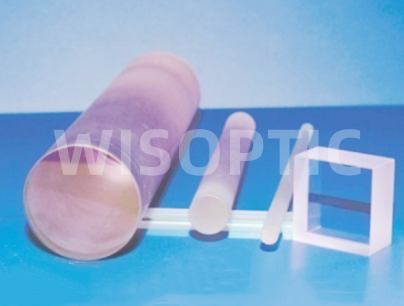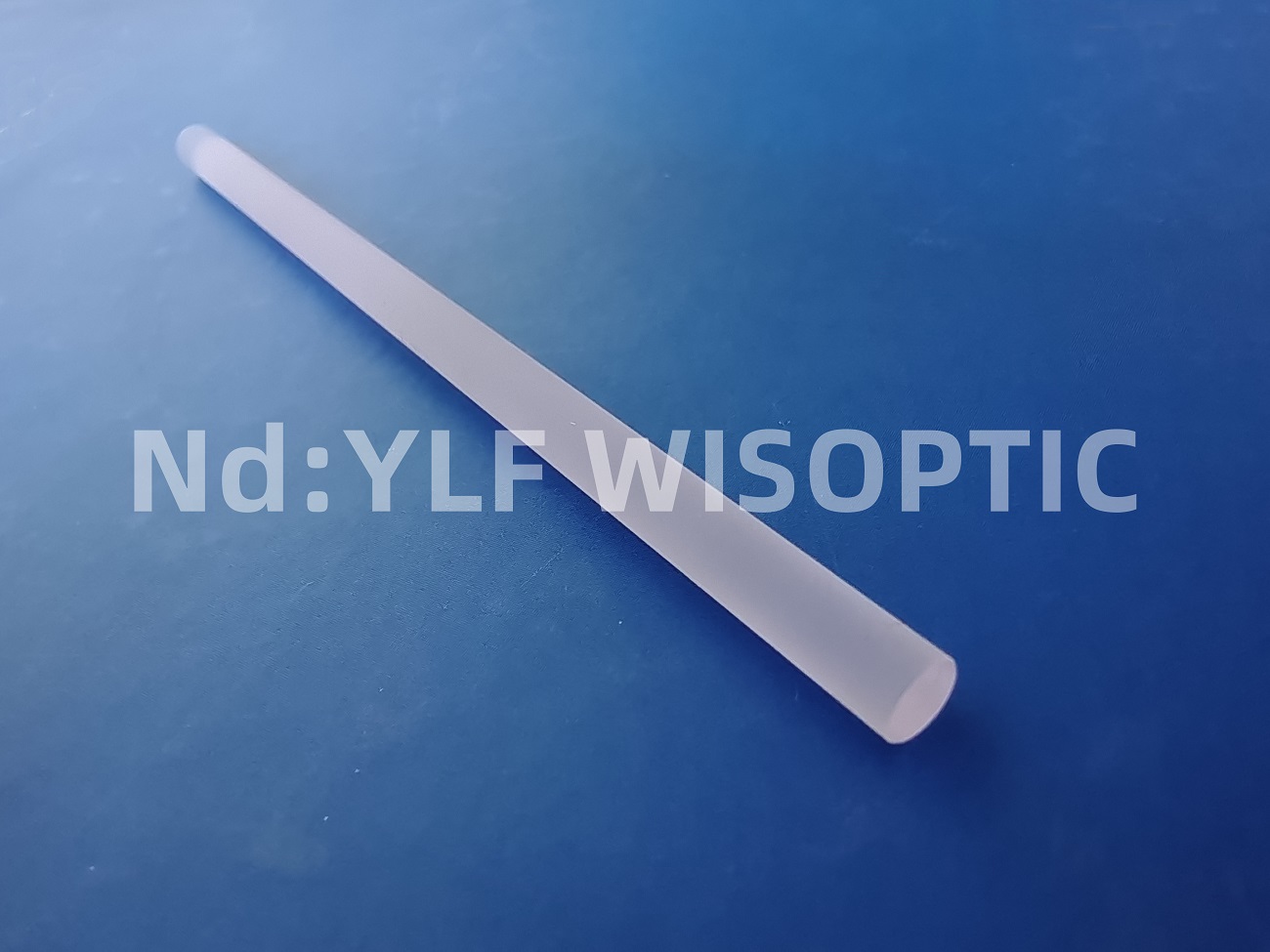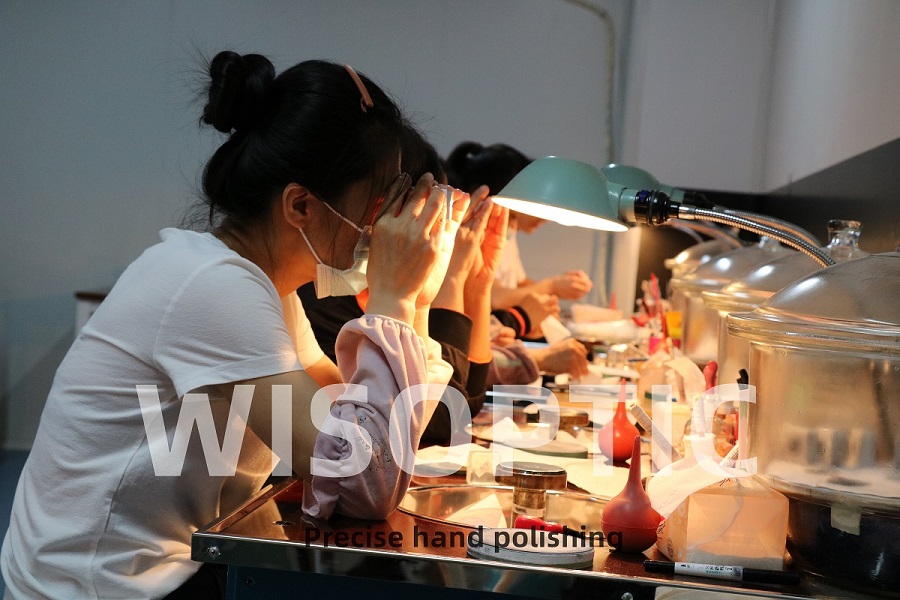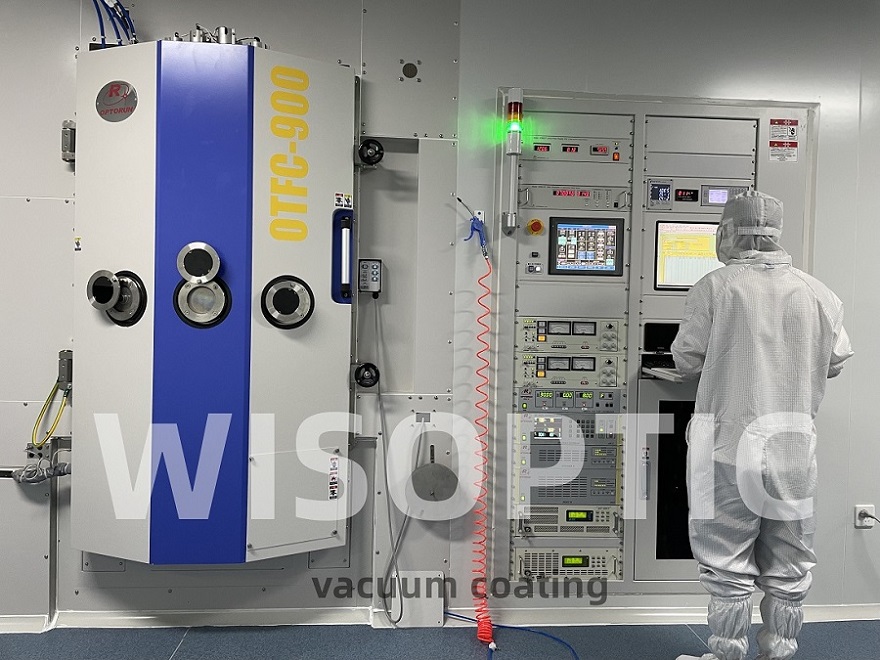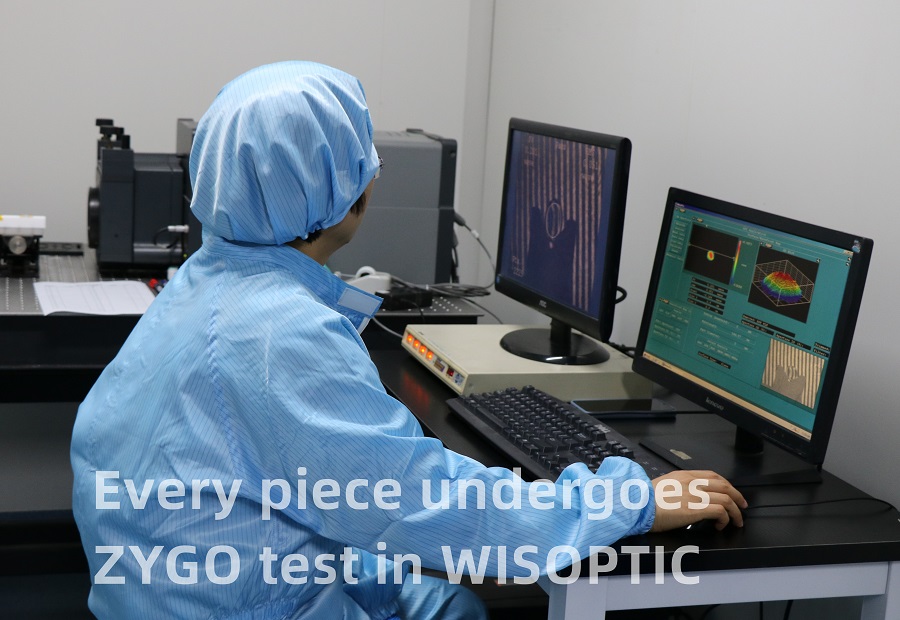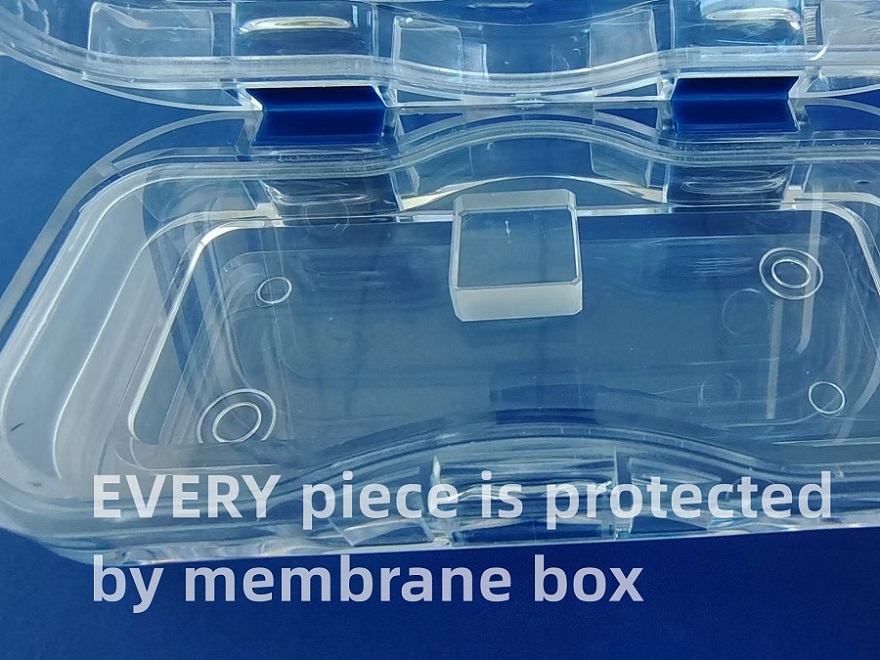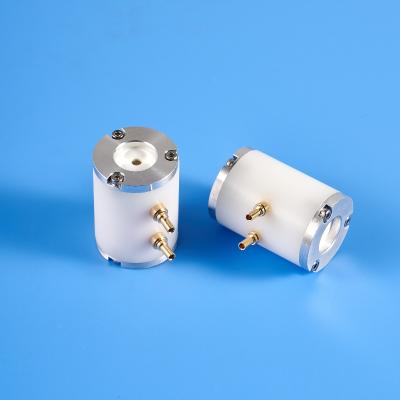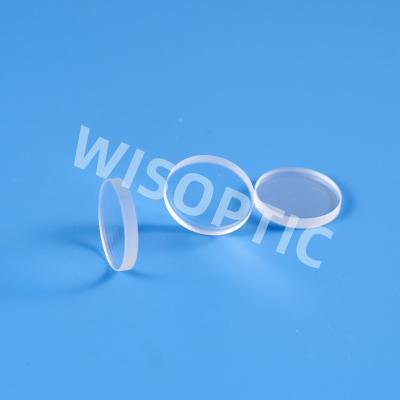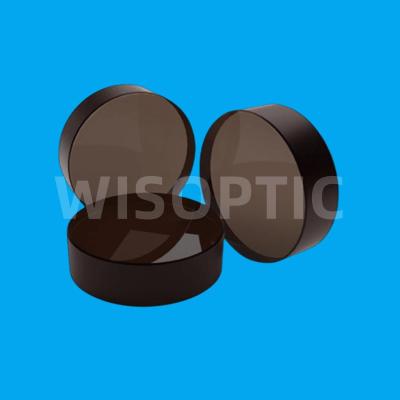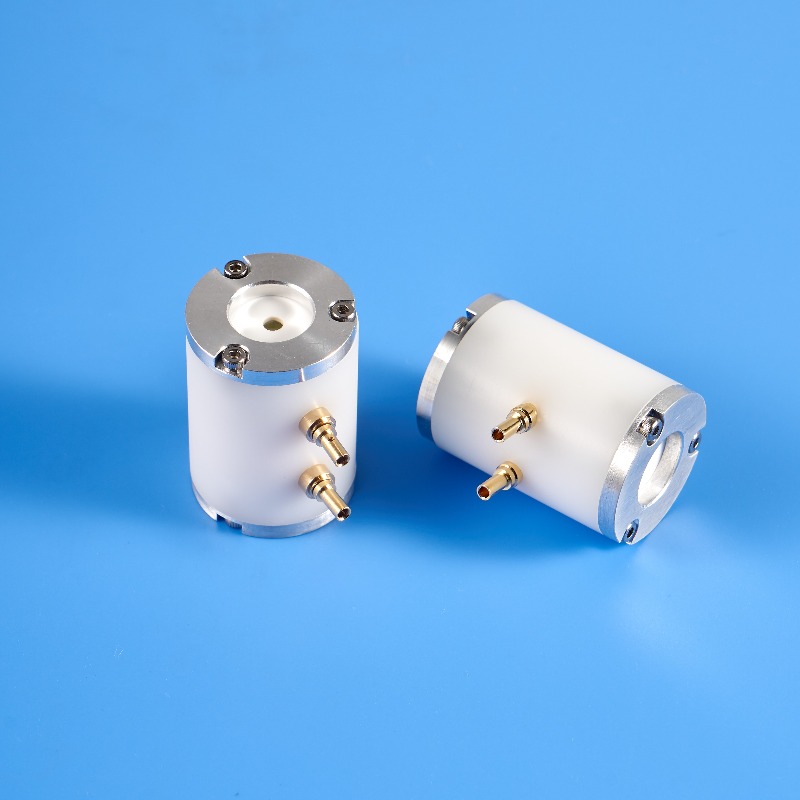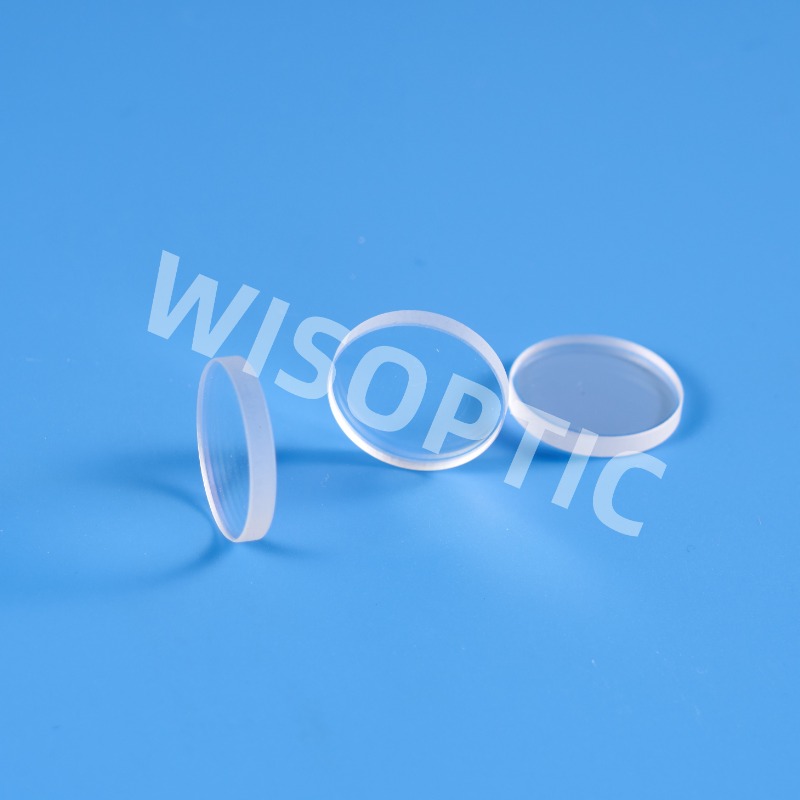Brewster-cut Nd:YLF at 1053nm, 1047nm
WISOPTIC Advantages - Nd:YLF
• Excellent internal quality
• Numerous options in size and doping level
• Precise orientation (deviation < 1°)
• Top quality of surface polishing
• Competitive price
• Mass production, quick delivery
YLF is birefringent, which eliminates thermally induced depolarization loss. The gain and the emission wavelength of Nd:YLF are polarization dependent: there is the stronger 1047nm ray for π polarization, and a weaker one at 1053nm for σ polarization. Nd:YLF provides alternative to the more common Nd:YAG laser crystal for near IR operation. The combination of weak thermal lensing effect (19 times lower than that of Nd:YAG), large fluorescence line width and naturally polarized oscillation makes Nd:YLF an excellent medium for CW, mode-lock operation, and Q-Switch operation at a moderate repetition rate (~ 1 kHz). The linear polarized beam is ideal for Q-switching and frequency doubling. The 1053 nm line well fits to the gain peak of Nd:glass, so Nd:YLF lasers can perform well as an oscillator or pre-amplifier for Nd:glass laser host.
The standard products are cut along a-axis of the crystal. The ends of the crystal are either Brewster angle cut or anti-reflection coated at 1053 nm (or 1047 nm).
WISOPTIC use high-purity raw materials, chemical reaction atmosphere and special equipment to grow high-quality Nd:YLF crystals, and provide Nd:YLF crystals selected to have low inhomogeneity over the whole aperture. Crystals with a diameter of 10 mm, length of 120 mm and inhomogeneity of 0.1-0.3×10-5 are available.
Main advantages of Nd:YLF over Nd:YAG
When repetition rate is low (less than few kilohertz), Nd:YLF is more suitable to get higher pulse energy than Nd:YAG. Nd:YLF has lower thermal conductivity, but still exhibits lesser thermal distortions.
Main disadvantages of Nd:YLF over Nd:YAG
However, main disadvantages over Nd:YAG is that Nd:YLF is much more soft and brittle and it is a little bit sensitive to water.
WISOPTIC Standard Specifications - Nd:YLF
Orientation | [100] or [001] (deviation < 1°) |
Dopant concentration | 0.4~1.2 mol % |
Sizes | Diameter: 2~10 mm; Length: 1.0~150 mm |
Dimension tolerance | Diameter: +0.00/-0.05 mm; Thickness: +/- 0.5 mm |
Flatness | < λ/8 @ 632.8 nm |
Surface Quality | < 10/5 [S/D] |
Parallelism | < 10” |
Perpendicularity | ≤ 5' |
Transmitted Wavefront Distortion | < λ/4 @ 632.8 nm |
Chamfer | < 0.15 mm × 45° |
Coating | AR coating: R<0.2% @ 1047nm/1053nm |
Laser Damage Threshold | 500 MW/cm2 for 10ns, 10Hz pulse (AR-coated) |

